Many of you can ask yourselves: Is it developmentally appropriate to teach my 2-year-old handwriting skills? The answer is YES! It all depends on how you see handwriting at every age.
Learning Without Tears resources play an important role in the process. Their instruction plus adding more hands-on experiences in the early years will do the magic.
This is how handwriting looks at every age developmentally speaking:
At Age 2
Children learn by doing. They are curious and want to explore. Suggested activities include:
- Sensory activities such as playing with water beads, flaxseed, corn starch, water, grains. Adding fine motor props to these experiences allows fine motor skills to develop. These include tweezers, tongs, syringes, spoons, mini measuring cups, containers.
- Fine motor skills activities such as pouring, squeezing, pincers, building, dressing themselves
- Coloring and drawing, even if it is just scribbling which is normal for the age. Use short crayons such as Flip Crayons® or broken crayons to promote a good grip.
- Letter play, alphabet knowledge happens when children start getting familiarized with meaningful letters such as the ones in their name. They use concrete materials to write rather than actual crayons or pencils. Some HWT activities you can do at this age are:
- Wood Pieces:
- Singing and playing their songs
- Sorting them
- Building with them over letter or shapes patterns
- Roll-A-Dough:
- Start practicing rolling up playdough snakes/rolls to form letters over a pattern
- Wood Pieces:
- Human figure building is a fun self-awareness activity where children start building the human figure. Mat Man is our favorite character, making the Wood Pieces come to life.
- Readiness strokes are displayed at this age when children can reproduce vertical and horizontal lines
- Arm posture should still pretty much be in the air with no helper hand down.
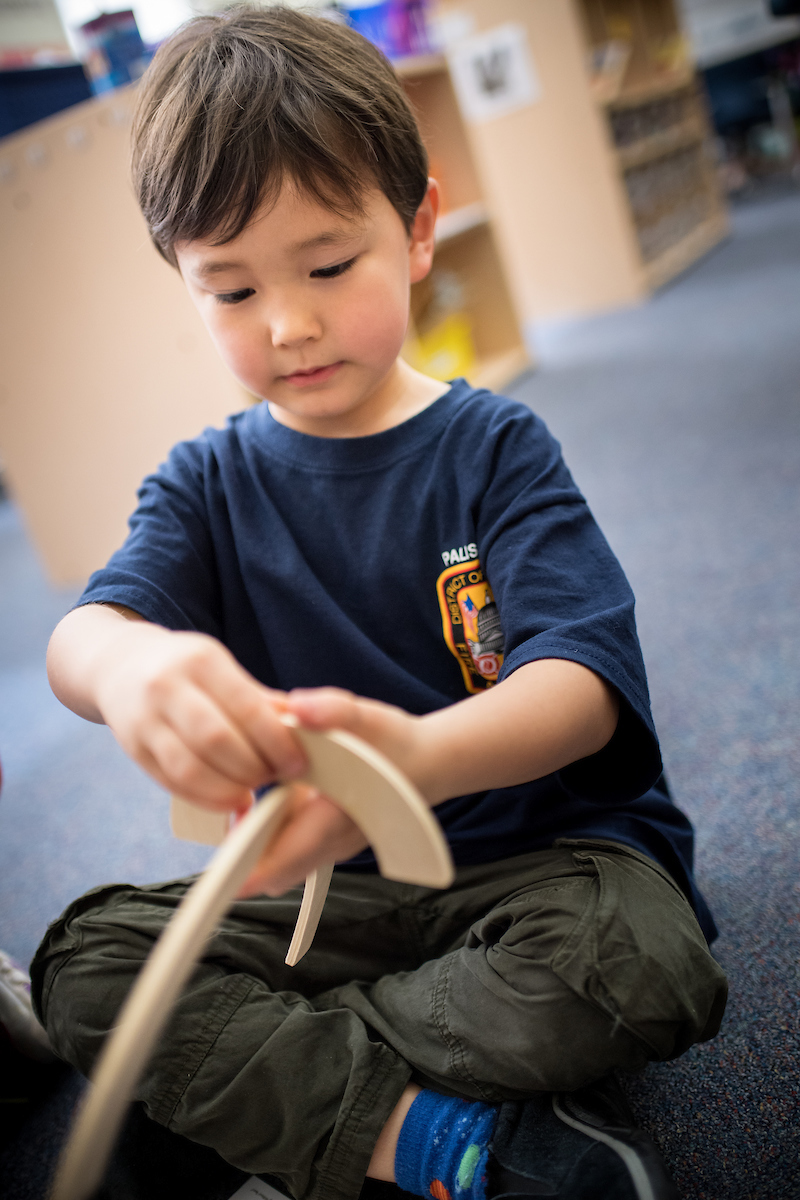
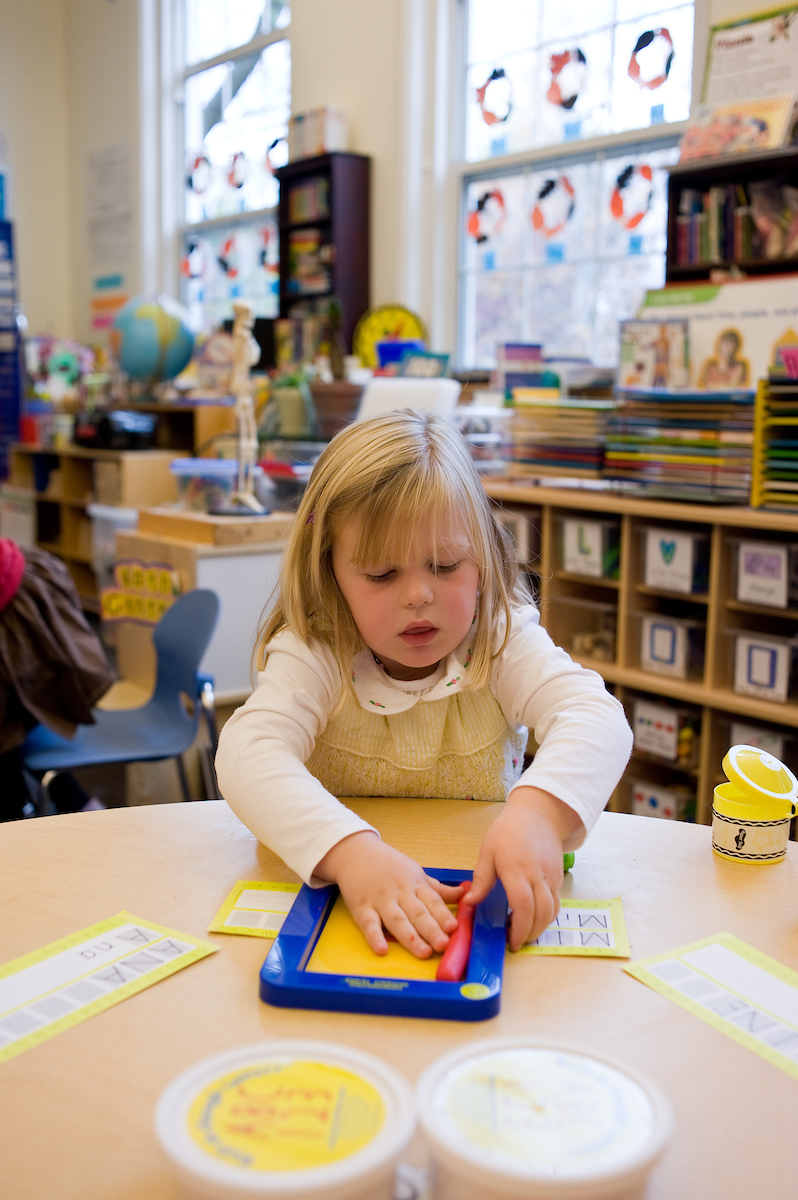
At Age 3
Children start being more aware of the written world around them. Suggested activities include:
- Sensory activities: Continue playing, they still LOVE sensory activities.
- Fine motor skills activities: Puzzles, lacing, tearing, building towers, start cutting skills
- Coloring and drawing: Children are ready to learn proper crayon grip, which is a skill that must be taught; it doesn’t develop by itself. Coloring with short crayons such as Flip Crayons® promotes a good grip and makes children develop fine motor skills by using strength in their hands to color. We are getting hands ready for tracing letters. Provide large sheets of paper for coloring and scribbling.
- Letter play, alphabet knowledge: At this age, both skills are still going strong. Some children will start moving into concrete tracing activities such as:
- Wood Pieces:
- Building with them over letter or shapes patterns
- Building letters over the Mat without the patterned cards
- Roll-A-Dough:
- Rolling play dough letters over model
- Tracing letters with a finger over playdough model
- Tracing letters over a tray with shaving cream or sand
- Stamp and See:
- Stamping letters over model using wooden magnetic pieces
- Attempt tracing using a little magnetic pencil
- Wood Pieces:
- Human figure building and drawing: Build Mat Man and start drawing him and themselves.
- Readiness strokes: At this age, children can reproduce a cross and a circle
- Arm posture: elbow is still in the air, helper hand starts coming down
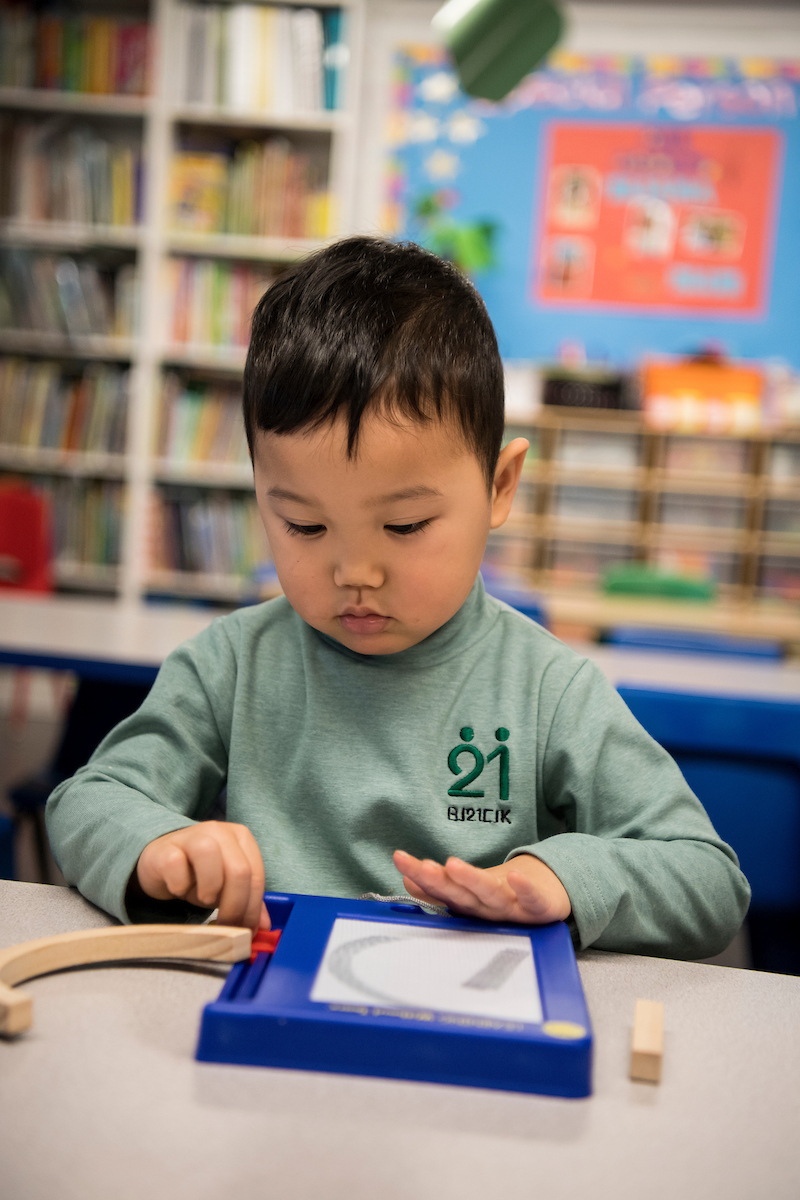
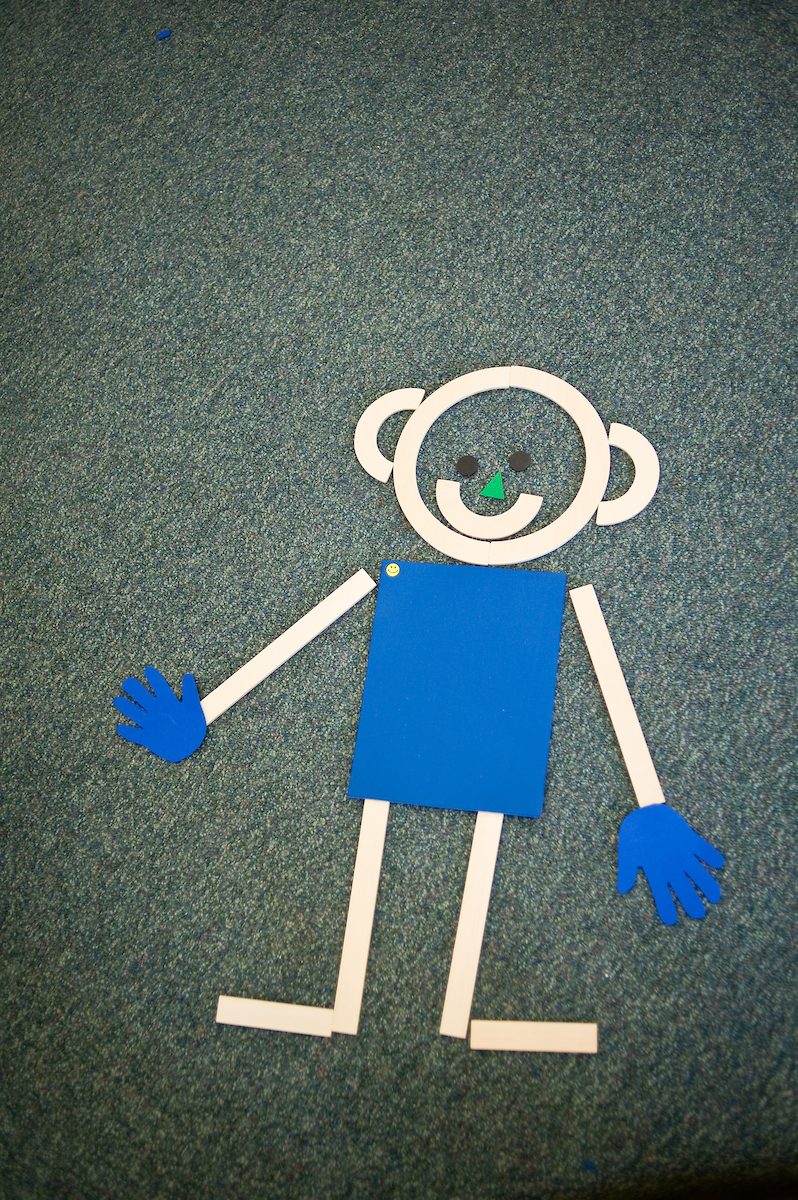
At Age 4
Children are ready to start discovering the tracing world. They will start tracing by using hands-on activities moving into crayon tracing. Suggested activities include:
- Sensory activities and fine motor skills activities: These activities should continue to be present. Children love them and they are vital for their development in the first 5 years of life.
- Coloring and drawing: This skill is a very important skill at this age. Children continue to strengthen their hands and develop fine motor skills.
- Letter play, alphabet knowledge: At this age, children will practice using hands-on experiences and move into crayon tracing.
- Wood Pieces:
- Building with them over letter or shapes patterns
- Building letters over the Mat without the patterned cards
- Roll-A-Dough:
- Rolling play dough letters over model
- Tracing letters with a finger over playdough model
- Making letters out of play dough in the tray without the model.
- Tracing letters over a tray with shaving cream or sand
- Stamp and See:
- Stamping letters over model using wooden magnetic pieces
- Stamping letters without the model using wooden magnetic pieces
- Tracing using little magnetic pencil
- Wet-Dry-Try: children use this 3 step process to practice letter formation.
- Wood Pieces:
- Human figure building and drawing: Build Mat Man and continue drawing him and themselves.
- Tracing: We are ready to start tracing letters! Using a gray or highlighter model is recommended rather than dotted or lined letters. This allows the child to see the actual letter rather than just connecting dots or lines. My First School Book offers a great opportunity for practice, having just enough letters to trace per page (4, children don’t need more), following a developmentally appropriate teaching order, and coloring practice.
- Readiness strokes: At this age, children can reproduce a square and by the late 4’s a triangle. This is the reason why Learning Without Tears has a different teaching formation in their PK program. They start teaching letters that have vertical, horizontal strokes, moving into circular and lastly diagonals. It’s based on development, and what children are ready for.
- Arm posture: The child's elbow is starting to come down while the helper hand holds the paper.
- Capital letters only: If you’ve wondered why… Learning Without Tears does teach capital letter formation first. All the recommended letter play activities so far are used for capital letters and numbers. The reason behind it is what’s explained above regarding child natural development, plus they all have the same size and the same starting point.
- No reversals: Another key concept to mention, is that all letter play activities offered by Handwriting Without Tears promote a physical boundary, allowing children to avoid reversals in their letter formation.
- Name writing: At this age, children start tracing and then moving into writing their names in all capital letters.
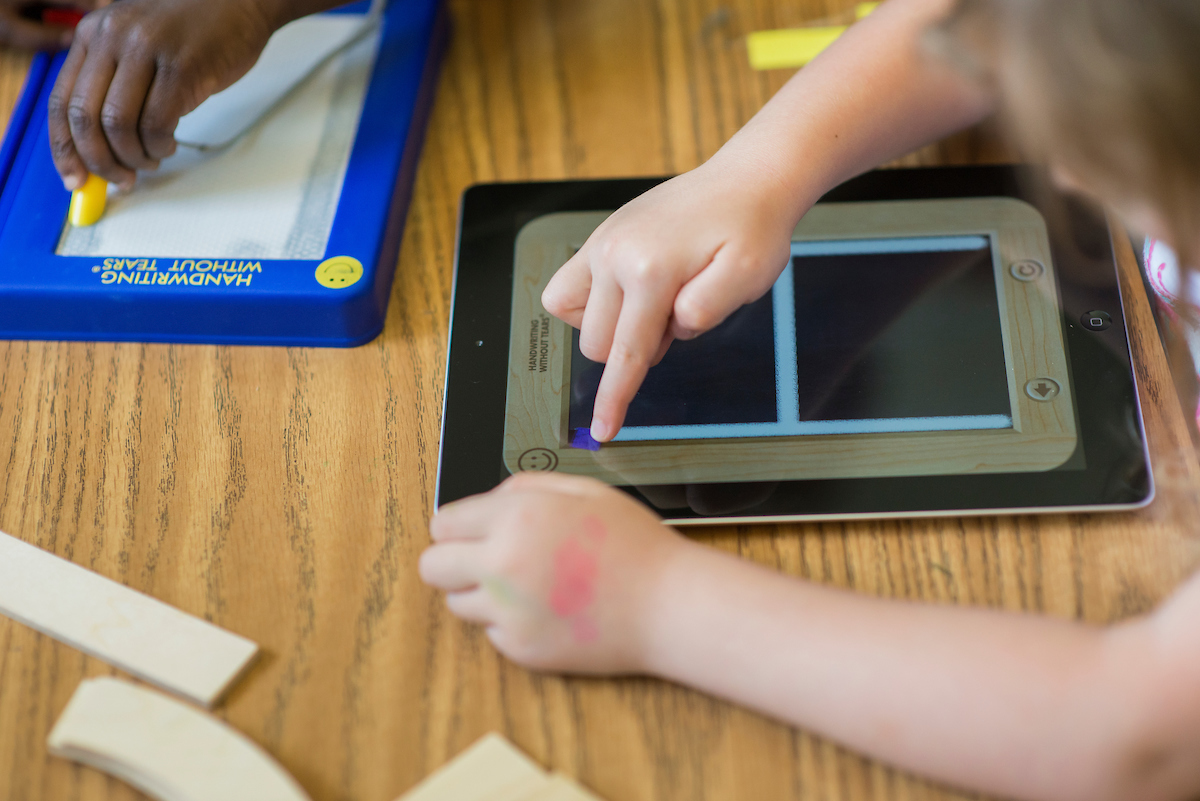
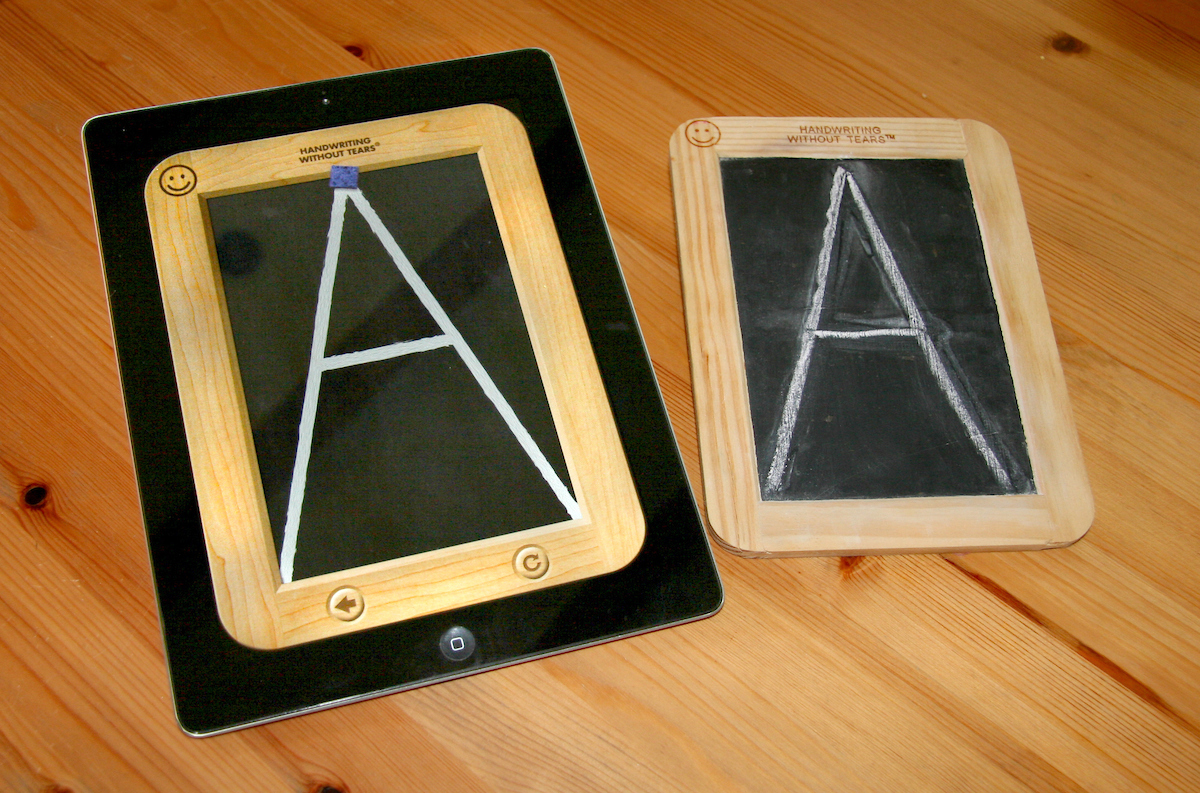
At Age 5
Children are ready to print capital letters and start discovering the lowercase letter world. They still continue playing and developing their fine motor skills.
- Sensory activities and fine motor skills activities: These activities should continue to be present. Children love them and they are vital for their development in the first 5 years of life.
- Coloring and drawing: This skill should stay present. Coloring activities are great for the handwriting process.
- Letter play, alphabet knowledge: At this age, children will practice using hands-on experiences and move into pencil printing.
- Wood Pieces:
- Building letters over the Mat without the patterned cards
- Roll-A-Dough:
- Making letters out of play dough in the tray without the model.
- Tracing letters over a tray with shaving cream or sand
- Stamp and See:
- Stamping letters without the model using wooden magnetic pieces
- Tracing using little magnetic pencil
- Wet-Dry-Try: children use this 3 step process to practice letter formation, both in the capital letter and lowercase letter board.
- Wood Pieces:
- Human figure building and drawing: Mat Man never gets old! Their human figure pictures start evolving into more complex drawings filled with details.
- Printing letters: We are ready to start printing letters. We use short little pencils for little hands, which gives children just the right amount of weight in their little hands. Children start by reviewing capital letter formation, moving into lowercase letters.
- Readiness strokes: At this age, children can reproduce a diamond. Their development is ready for every stroke. Lower case letters can now be introduced.
- Arm posture: The child's elbow is down while the helper hand holds the paper. Posture is ready for a formal handwriting experience.
- Name writing: Children transition from writing their name in all caps into title case.
An appropriate handwriting instruction puts the child first. Their development is crucial. Respecting what they are capable of doing at every age is the key to success. Providing children with all these readiness learning opportunities allows them to be successful in the formal writing process by nurturing their needs and development.
Foster Readiness and Writing Skills with Learning Without Tears!
Multisensory materials help to teach the building blocks of letter and number formation. Using materials such as dough, Wood Pieces, and small writing tools, children strengthen their hand-eye coordination while developing muscle strength in their hands and fingers, too.
Learning Without Tears has a number of hands-on, multisensory resources to support readiness and writing in young children. Our Get Set for School® Pre-K curriculum is full of developmentally appropriate activities that teach children about letters, body awareness, numbers, sequencing, and sharing in a fun, engaging, and informal manner.